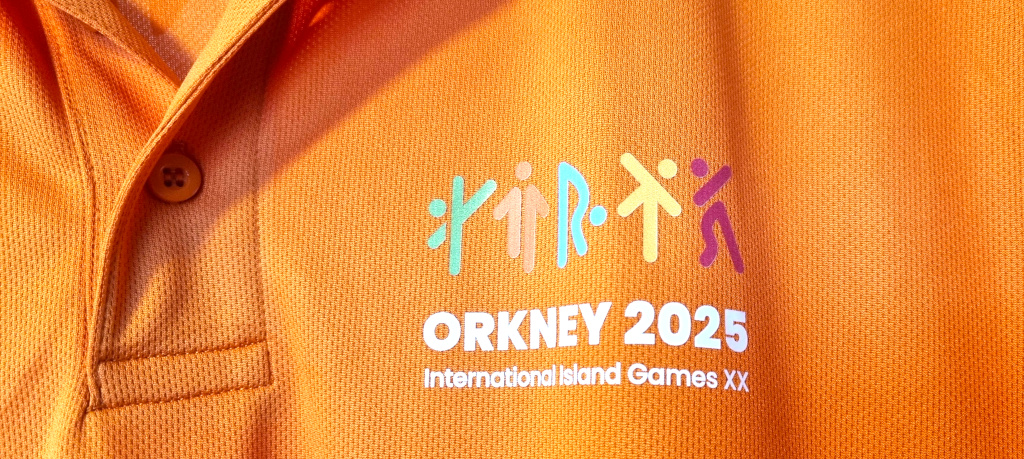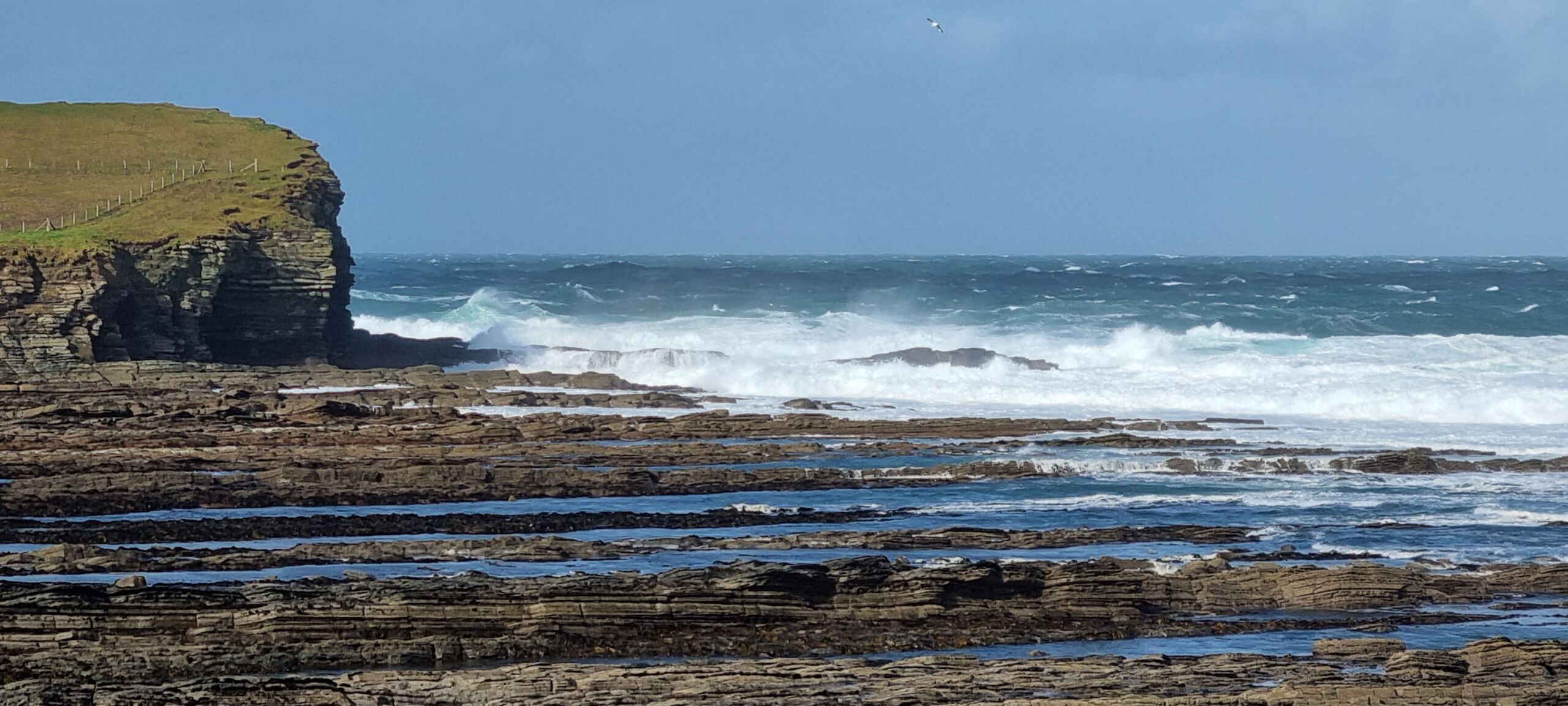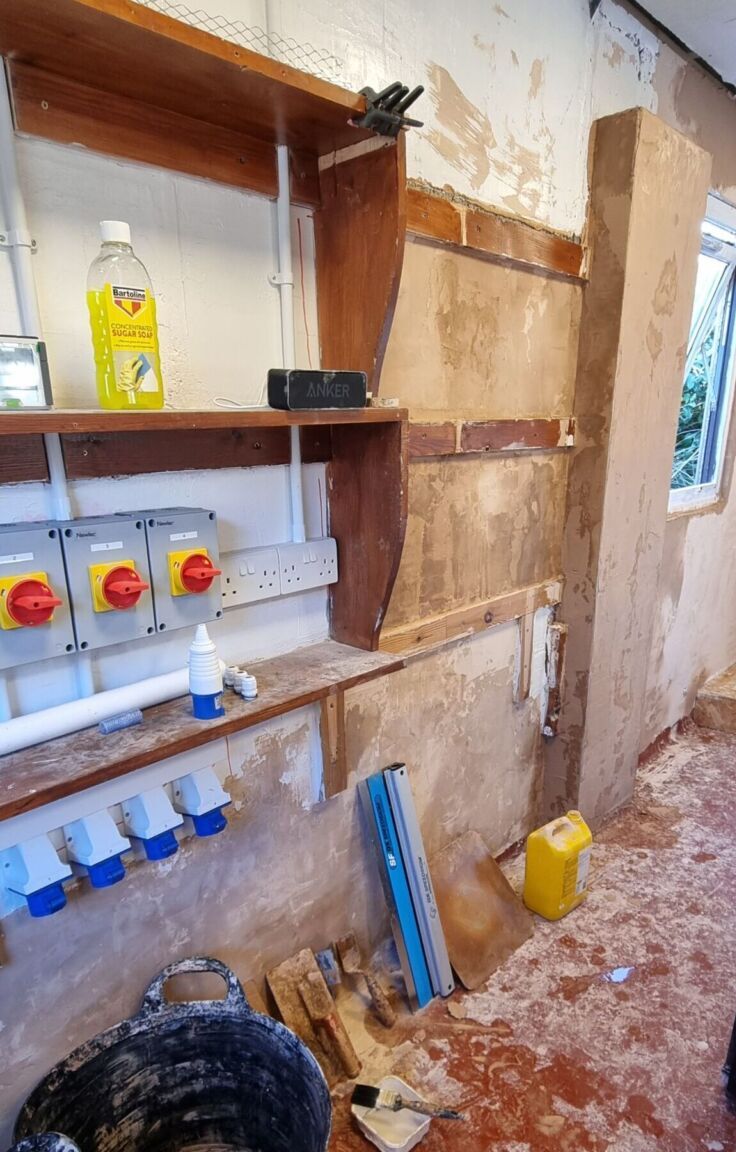The Orkney 2025 Island Games are just around the corner. As many other Orcadians are, we’re volunteering to help out during the week of the 20th Island games here. The games are running from the 12th to the 18th of July. Many years of effort have already gone into making this a successful sporting event. Now that the date is almost upon us, we’ve recently picked up our games uniforms, schedules and volunteer passes. It’s all feeling very real now.
This will be a fantastic week in Orkney with visitors and games competitors from island communities around the world. For those who are making the long journey up, we cannot guarantee good weather here in this wind swept Northern archipelago, but we can guarantee Orcadians will give competitors and visitors alike, a very warm island welcome.
The best of Orkney food and drink will be available during the games, from the savoury with Beiting and Brew to the sweet from Odin’s Kitchen. The Orkney.com site is an excellent guide to what Orkney has to offer more widely as well.
Brewery electrics started
June 2025 has been another busy month working on getting the brewery ready. The longest day has just past and in Orkney it doesn’t really get dark at the moment, especially if it is a clear night.
It really feels like things are starting to move now with the brewery build. It has taken such a long time for me to get to this point and I feel like I’ve been a social hermit for the past few years.
Now that the building warrants are in place, work has finally started on the brewery building to upgrade the electrics from the basic setup it had as a small workshop to an installation suitable for my brewing equipment.
We’re adding sockets for items such as the can filler, can seamer and labeller. The brew kettle is a much heavier duty piece of equipment and now has its own dedicated and isolatable 16 amp circuits plus a spare set. The spare set will allow me to run a second or smaller kettle for sparge water heating or recipe development without having to disconnect anything. Each circuit has its own isolator so I can shut things down quickly and in a controlled manner should a boil over occur.
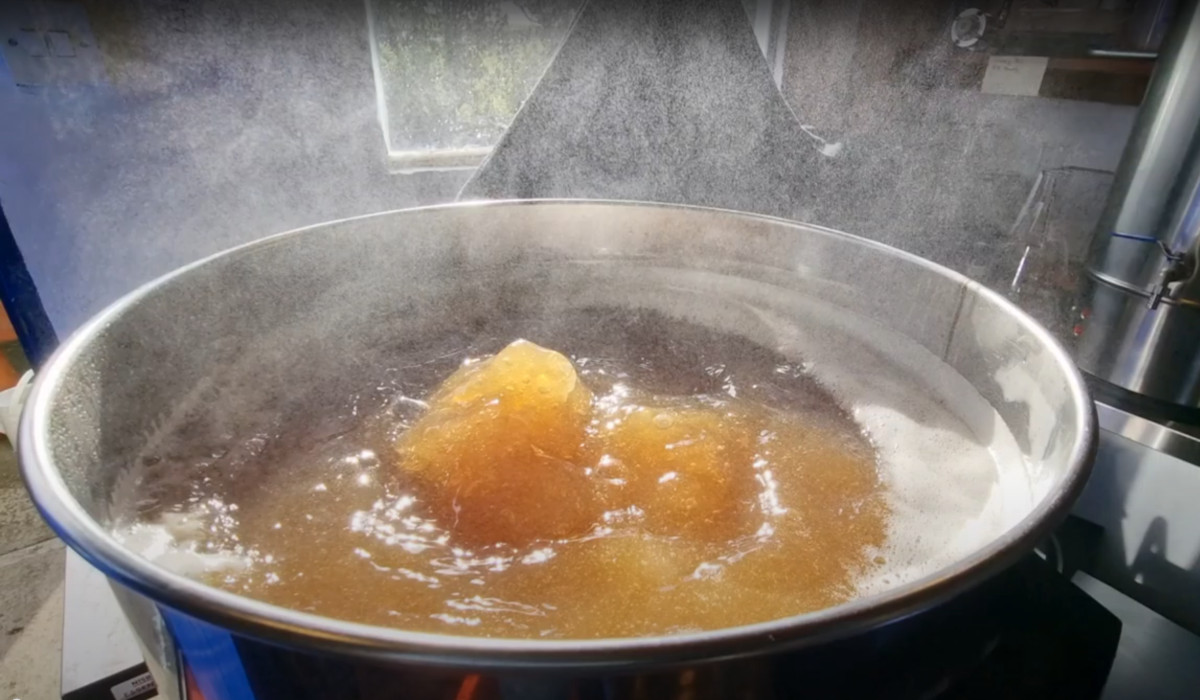
Boil overs
Boil overs can be messy affairs. When the wort is boiling, there is a lot of foam generated. The wort contains a lot of protein from the malt and dissolved gases. Nucleation points in the wort from protein coagulation can cause rapid expansion of these gases and the hot foamy wort body can suddenly rise up and if you are unlucky it can foam over the top of the kettle making for a sticky mess.
Killing the heat source quickly can reduce the chances of this happening, hence the individual isolators. Boil overs are one of the reasons brewers need to keep a close eye on what’s happening in the kettle during what can be a long boil time, depending on the style of beer that is being brewed. The equipment I use offers a lot of protection as it has a steam hat and condenser which are attached for the boiling phase and contain the foam. The primary benefits of the steam hat however are that all the steam is condensed out in a contained and controlled manner, leaving no condensation to form on walls and also all brewing smells are contained.
Stonehaven Beer Festival
Whilst I was waiting for the electrician to become available to do the brewery work, we went away for a few days South and took in the Midsummer 2025 beer happening down in Stonehaven in Aberdeenshire.
This is an annual volunteer run beer festival raising money for charities and good causes. It is held in the very pretty coastal town of Stonehaven. The town has a long fishing heritage and the old town has a lovely harbour, very typical of the East coast of Scotland with sturdy, curved protective walls. The North Sea can be brutal here and the multiple layers of protection the harbour gives, are vital.
I’d not been to a beer festival since the nineties, so I was keen to see what they looked like now. Once Northern Latitudes is up and running properly and I have some beers to showcase, I may attend a few more of these. I chose to treat this visit as enjoyable research.
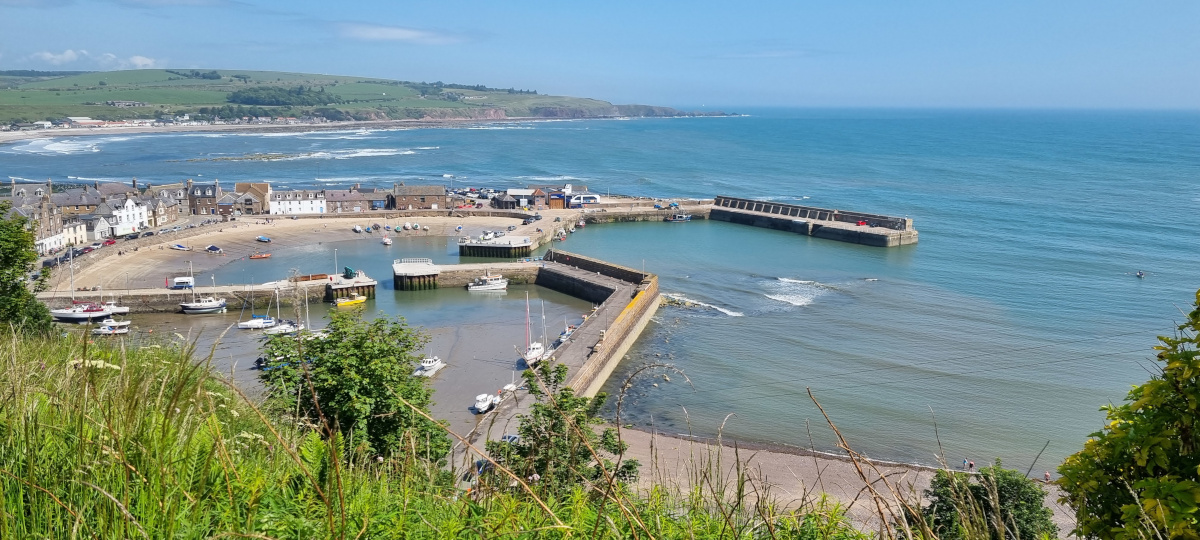
Six Degrees North
Before we attended the beer festival proper, we’d booked in for a tasting menu with paired beers, hosted by Six Degrees North brewery at their Marine Hotel on the harbour front in Stonehaven.
It was a great event with a couple of stand out beers for me, an opening Cantillon Gueuze which was a favourite of mine when we lived in Belgium and Six Degrees North’s own Barrel aged Triple.
I finished the night downstairs in the bar with a Chimay Blue, a long time Belgian staple for me since the late 90s.
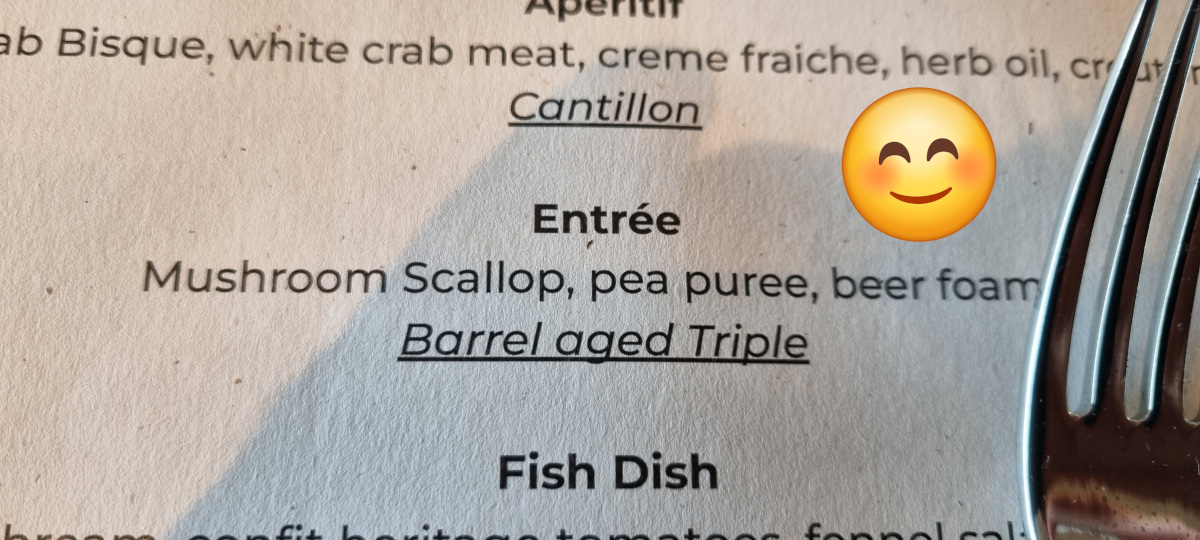
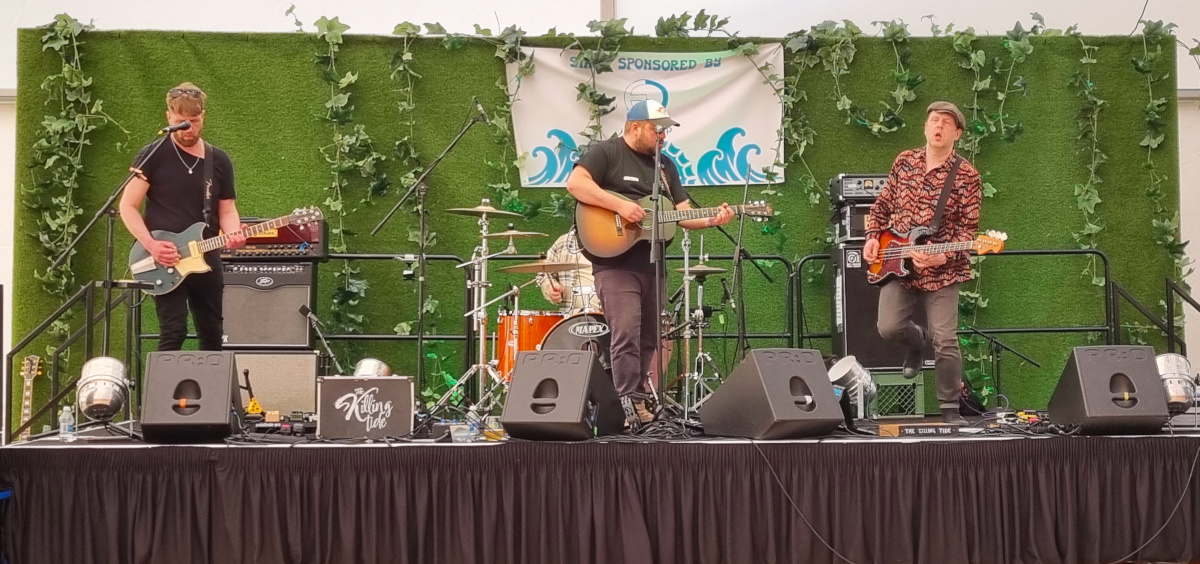
The Killing Tide
At the beer festival itself, we fortuitously ended up with the best seat in the main tent opposite the stage where ‘The Killing Tide’ were opening the music for the evening. I’d not seen an eBow to such great atmospheric effect on a guitar for many years. They’ve just got their first album out and if you like earlier Runrig (think Heartland, Once in a Lifetime) and Big Country, these folk are shaping their own path with a huge sound and energy, but I’m sure I could hear the spirit of such Scottish stalwarts in there.
Delve deeper
As I sipped my Holy Goat 10.2% imperial stout and we listened to the bands, more folk arrived of all ages which was great to see.
As for the beers, it was reassuring to see so many independent breweries represented at the festival and also to note that not everything was an IPA.
It seems now that every beer on UK supermarket shelves is a thin lager or an IPA, DIPA or NEIPA of some description. However, in Scotland at least, sours are getting a showing now. These sours have appeared on shelves much in the same way that Belgian beers started turning up bars in the nineties here in the UK with Leffe Blond and the sadly now much diminished phoenix that is Hoegaarden Wheat or Witbier. You can read a bit about the troubled journey that Hoegaarden has had in this 2007 article by Roger Protz.
If you are not familiar with these refreshing sour brews which, of course have been perfected by the Belgians as with everything else beer related form that country, Vault City Brewing have some very good accessible examples.
Milk the Funk
If you decide you like such entry level sour beers and want to dive deeper into this complex world, then read up on Lambics, Gueuze, Faro and the frankly weird fermentation and maturation processes that can go on to make these beers so special.
Milk the Funk is a great place to dive deep all the fascinating science and techniques around these beers.
Where I want to focus Northern Latitudes brewery’s energy is on barleywines, scotch ales and imperial stouts. Imperial stouts only represented about 6% of the styles on offer and the really interesting sounding ones were sadly not on tap the day we were at the festival. Of barleywines I saw no examples and only one scotch ale, from Six Degrees North.
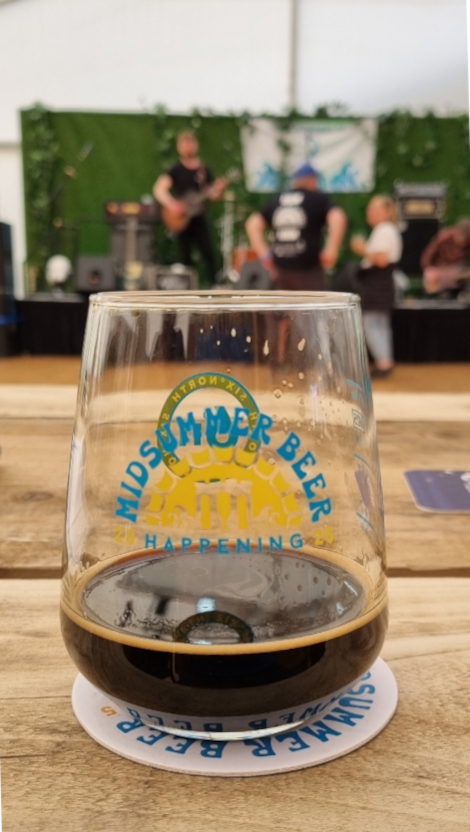
Speyside Cooperage
As barrel ageing will play a key part in how I want mature my beers, I wanted to understand a lot more about the skill and art that goes into both making and reconditioning a barrel or cask. We had booked in for a tour of Speyside Cooperage where distilleries and wineries send their existing barrel stock for refreshing and new barrels are made.
Young apprentices are trained over four years in the various stages of this process and when they finally qualify they go through a blackening. A cooper’s blackening is a ceremony where they are stripped to their underwear, covered in the likes of treacle, flour, feathers and less pleasant concoctions put together by their colleagues and rolled in the last barrel they worked on. This marks their transition from apprentice to professional cooper.
It’s similar to the blackenings you’ll see happening in the days and weeks before Scottish weddings.
The shop floor was a very noisy place. We watched from a raised gallery as the coopers selected a barrel, replaced and repaired staves. After this stage, they replaced heads or ends and re-charred the barrel if necessary to the level of toast required by the customer. Customers provide sacrificial barrels for the repair process so that the flavour characteristics of the barrel being repaired are not affected by the introduction of virgin wood.
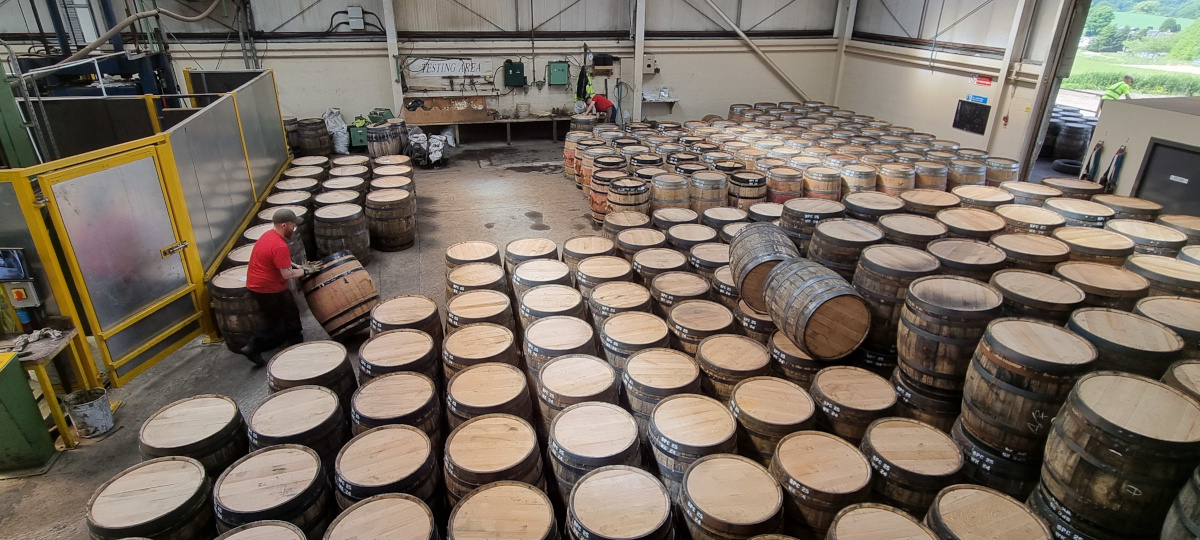
What’s next?
After our few days South it was back up on the early evening boat from Aberdeen to Kirkwall. A lot of work still lies ahead before I can start milling grain and fermenting beer. Getting on with the brewery building and associated store work is next. I’ll crack on.
